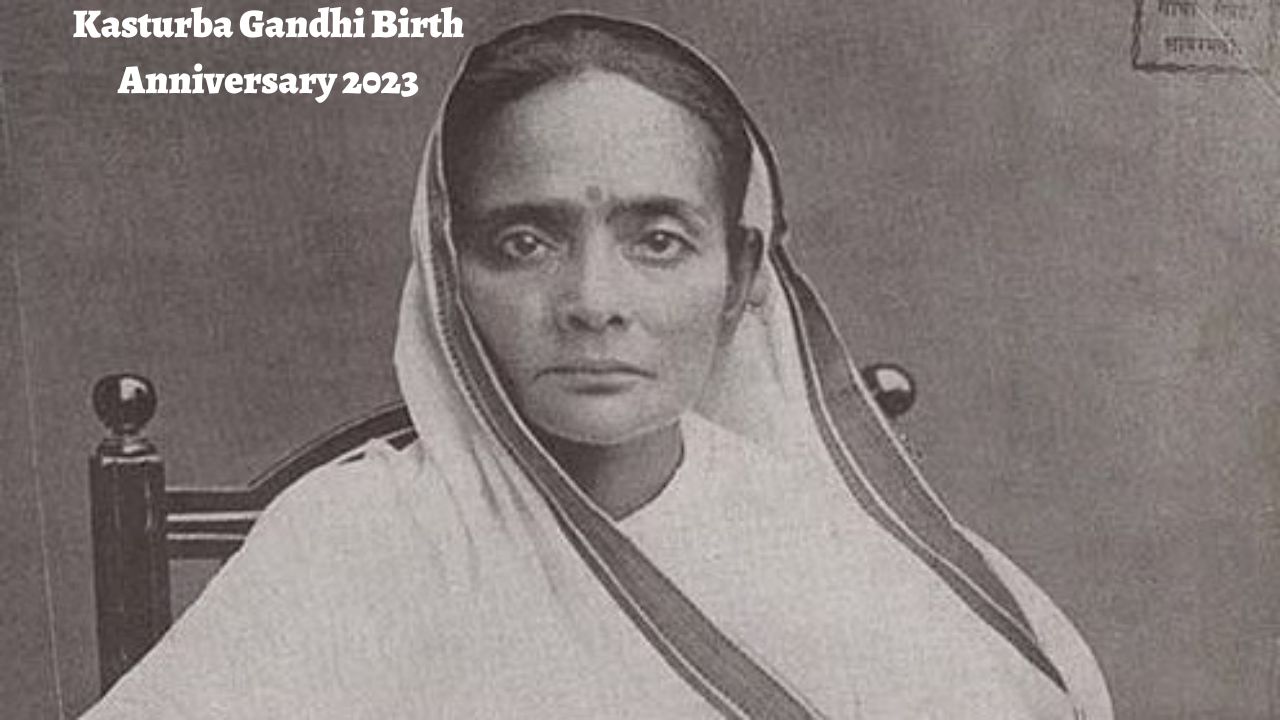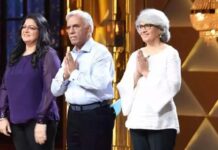Kasturba Gandhi Biography: Kasturba Gandhi was born on April 11, 1869, to merchant Gokuladas Kapadia and his wife Vrajkunwerba Kapadia. She was one year elder than Mohandas Karamchand Gandhi, who was 13 at the time of their marriage in 1833. Despite being primarily overshadowed by her husband throughout history, she was an important figure in the Indian Independence Movement. Here is a Kasturba Gandhi biography in which you will get to know everything about her.
Kasturba Gandhi Biography: Birth Anniversary
| Name: | Kasturba Gandhi |
| Nationality: | Indian |
| Date of Birth: | April 11, 1869 |
| Place of Birth: | Porbandar |
| Died: | February 22, 1944 |
| Children: | Harilal, Manilal, Ramdas, Devdas |
| Gender: | Female |
| Profession: | Activist |
Kasturba Gandhi Early Years
Kasturba Gandhi, in full Kasturba Mohandas Gandhi, Kasturba Kapadia, Kasturba also spelt Kasturbai (born April 11, 1869, in Porbandar, India; died February 22, 1944, in Pune), Indian political activist who led the fight for civil rights and independence from British rule in India. She was Mohandas Karamchand Gandhi’s consort.
Kasturba Kapadia was born to affluent merchant Gokuladas Kapadia and his wife Vrajkunwerba in the city of Porbandar (now in the state of Gujarat) on the Arabian Sea coast. Her family and that of Mohandas Gandhi (who was several months younger than she) were companions, and they were married in 1882 when she was 13 years old. She moved into the Gandhi residence in Rajkot. Kasturba had not attended school prior to her marriage, so Mohandas decided to provide her with a fundamental education.
Political career
Bengali poet Rabindranath Tagore with Mahatma Gandhi and Kasturba Gandhi at Santiniketan, 1940.
Kasturba Gandhi entered South African politics for the first time in 1904, when she and her husband established the Phoenix Settlement near Durban. In 1913, she participated in protests against the mistreatment of Indian immigrants in South Africa, for which she was imprisoned and sentenced to hard labour on September 23, 1913. While incarcerated, she led other women in prayer and urged educated women to teach illiterate women to read and write.
Gandhi and Mohandas returned to India from South Africa in July 1914. Despite her chronic bronchitis, Kasturba continued to participate in civil actions and protests across India and frequently stood in for her spouse in prison. She devoted the majority of her time to aiding others and serving in ashrams. Gandhi was referred to as “Ba” or matriarch because she was the matriarch of the Indian ashrams.
In 1917, in Champaran, Bihar, where Mohandas was working with indigo cultivators, Gandhi worked for the welfare of women. She instructed women in health, sanitation, discipline, and reading and writing.(Reference Required) Even though she was in ill health, she participated in a Satyagraha (nonviolent resistance) movement in Borsad, Gujarat in 1922. She did not participate in Gandhi’s famous 1930 Salt March, but she continued to participate in numerous civil disobedience campaigns and marches. As a result, she was detained and imprisoned multiple times.
Top Richest Rappers in the World 2023
Kasturba Gandhi’s Personal Life
In 1885, the couple had an infant who died shortly after birth. Harilal, their first surviving son, was born in 1888, six years after their wedding. Kasturba stayed behind with the newborn while Mohandas left shortly after Harilal’s birth to pursue law in London (returning in 1891). She subsequently gave birth to Manilal (1892), Ramdas (1897), and Devdas. (1900).
Kasturba remained in India when Mohandas moved to South Africa to practise law in 1893, but he returned for the family in 1896, and they arrived in South Africa early the following year, where their last two children were born. The Gandhi family moved back to South Africa in 1903 after returning to India in 1901.
Kasturba Gandhi Facts:
- The jewellery of Kasturba was also sold to generate funds for Gandhi’s legal education in England.
- When he travelled to South Africa and England, she was frequently separated from her husband and their young children. Eventually, they settled in South Africa together.
- She was courageous, participated in South African politics, and once helped Gandhi evade a white mob that was threatening him. She established the Phoenix Settlement near Durban, where she garnered the respect and cooperation of everyone.
- She was incarcerated in 1913 for protesting the maltreatment of Indian immigrants. She led other women in prayer and implored educated women to teach illiterate women to read and write while she was incarcerated.
- She once led the women of Rajkot in a nonviolent liberation movement, for which she was imprisoned for more than a month in solitary confinement.
- Many accounts indicate that when Gandhi made the vow of chastity in 1906, she was opposed to it because it contradicted her role as a traditional Hindu wife.
- She represented Mahatma Gandhi while he was incarcerated and even spoke to his followers.




